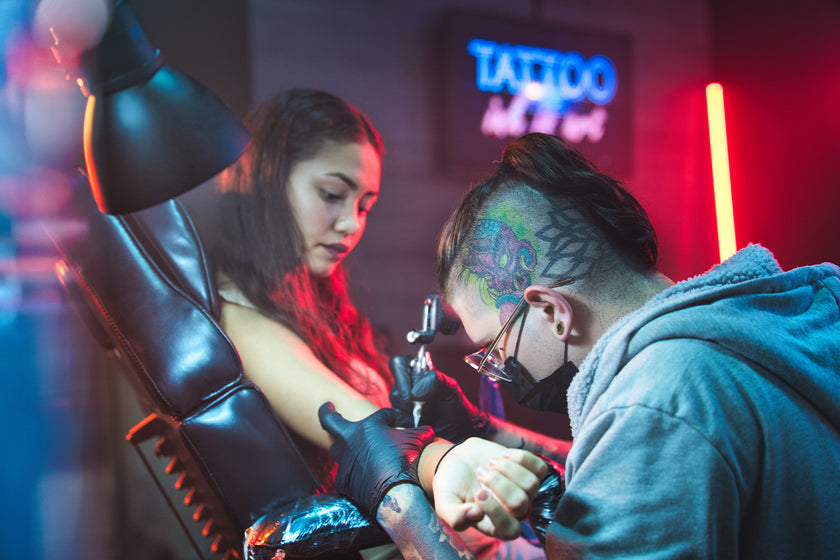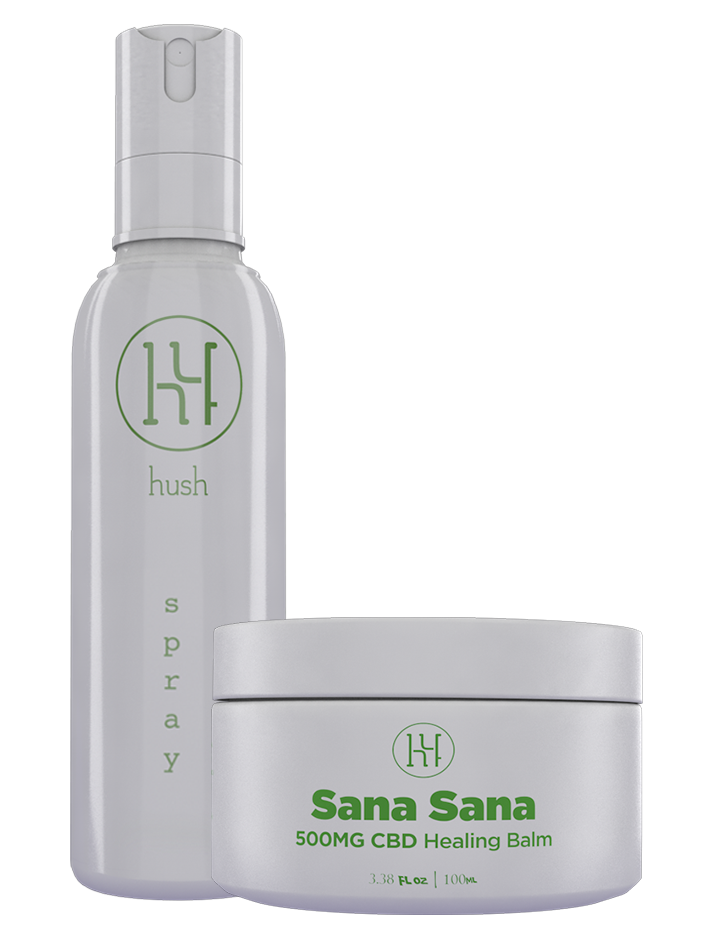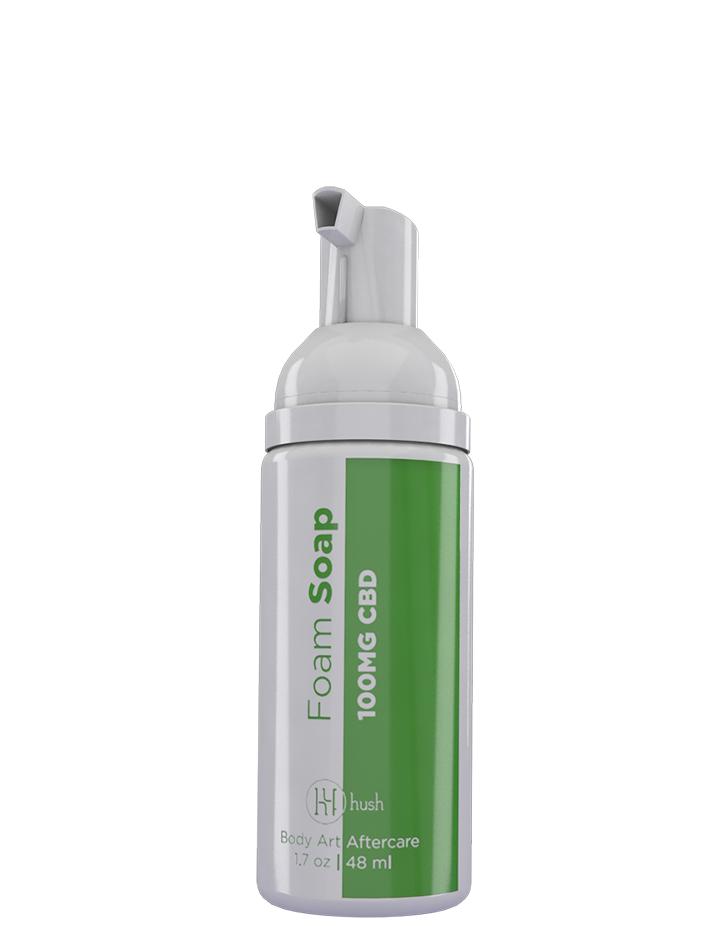Is your ink looking a bit blurry? Are those corners not as pointy as you’d like them to be? Did some of your ink come out while healing? You might be in the market for a tattoo touch-up.
Getting your tattoo touched up isn’t like a walk of shame. It’s fairly easy and not uncommon at all. Many artists let their final paintings stew for a few days, adding a little dab of color here or there before they truly feel like it's finished.
The same goes for a tattoo. You might need an extra dash of ink here or there for it to look exactly how you imagined it.
What Is a Tattoo Touch Up?

A tattoo touch-up is when you enhance a tattoo you already have. It’s basically adding more tattoo to your tattoo.
When the piece finally heals (about four months), you can finally give it a discriminating look over. If anything is amiss—a messy edge, a lack of shading, a splotch of color missing—you can go back to your tattoo artist and ask them to fix you up.
Your tattoo artist will sit you down similarly to your first tattoo session and tattoo your tattoo a little more, adding whatever was missing. Easy peasy.
It isn’t uncommon to need a touch-up—especially for more complex tattoos. When a tattoo is healing or even during the tattoo session, you can’t quite tell what it will look like.
Tattoo artists are experienced with this but imagine trying to paint a picture under a waterfall. That’s kinda what tattooing is like when the person starts bleeding—ink starts running, your skin gets all irritated, and things get messy. Cue the artist wiping away excess ink and blood during the tattoo session.
At some point, your artist may finish up, knowing you’ll be back to fix things up later on.
Reasons for a Touch-Up
Why do people get touch-ups? When the original tattoo finishes healing, it’s time for a touch-up. Touch-ups are fairly common, and needing or wanting a touch-up isn’t a bad thing at all.
Even experienced artists do touch-ups on their work. Once a tattoo is fully healed, everyone can see what it looks like much better, and it’s easier to tell if it needs a little extra oomph.
Ink Loss
Tattoos can lose ink for a variety of reasons when they’re healing. Excessive sweating can cause the ink to disappear before the skin can trap it. Sometimes the artist doesn’t tattoo deep enough into the skin, and it seeps out during the healing process.
Sharper Edges
During the tattoo session, after a few passes of ink, your tattoo starts to show up in your skin, but your skin also starts to swell and get red and irritated. Swelling will inhibit your artist from seeing a true version of how the tattoo will turn out. The artist may need to revisit certain parts of your tattoo to perfect edges and lining.
Re-Coloring
All tattoos—color ink and black ink alike—fade after time and with sun exposure. You might need a complete re-touching to revitalize your tattoo.
Avoid fading caused by the sun by using sunscreen whenever you expose your tattoo to UV rays. Use a tattoo balm to keep your tattoo moisturized and healthy to avoid fading as much as possible.
Added Detail
Sometimes, even when your tattoo turns out exactly how you expected, you see it healed up, and there’s just something missing. Or maybe a part of it just doesn’t look quite right and needs some definition or shading.
When Can You Get a Touch-Up?

You can touch up fully healed tattoos. First, you won’t want to further injure an injury—plus, it would hurt like hell. Second, it’s a bad idea to try to fix something when you don’t even know what it looks like yet.
Imagine you’re painting your name on a piece of wood. You add the base coat of white paint and let it dry; then, you start painting your name.
If you try to paint your name before the base coat is dry, you will get an ugly mix of colors and clumping. Don’t make the same mistake with your tattoo. You can’t just sand that down and start over.
After your tattoo is fully healed, you can get touch-ups whenever you want. At some point, you should leave a tattoo alone, though. You don’t want to shove too much ink in one spot.
You should aim to get all your touching-up done in one session close to the time your tattoo has fully healed but not long after. Because ink fades over time, your tattoo might start looking blotchy or disjointed if you get multiple touch-up sessions done in different years. It could be a vibe, but if that’s not what you’re going for, try for just one touch-up sesh.
How Often Do Tattoos Need Touch-Ups?
The most we could imagine a tattoo needing a touch-up is twice—if any.
Your first touch-up would be after you first get your new tattoo. Your tattoo fully heals, and maybe there's a spot or two that needs a little extra ink.
After that, the only other time you might need a touch-up is way later in life. If a part of your tattoo is completely lost or has faded enough, you might want to go over it again.
Is Asking For a Touch-Up Rude?
Not at all! Most artists will tell you to come back once the tattoo is fully healed if it needs any touch-ups.
During your tattoo session, while your tattoo artist is tattooing you, your skin is bleeding, swelling up, and getting all red. All of that inflammation inhibits the tattoo artist.
Experienced artists anticipate this and can work around it and know when to tattoo certain parts of the tattoo to avoid a sloppy-looking final product. For less experienced artists, it might be more common to need a touch-up.
There’s nothing wrong with a touch-up, though! It’s just adding final detail to the body art. Once everything is healed, you won’t be able to tell the difference between the two sessions. It’s all good.
Who Does the Touch-Up?
If you need a touch-up, your original artist should do it. You should ask your tattoo artist what their touch-up policy is.
It will depend on how much touching up you need. Your artist may do some for free or for a reduced price. It also may be a quick 30-minute moment and probably not as intensive as the original session.
If you need a touch-up years after the fact, you can ask around at your local shops who would be good for the job. Sometimes tattoos that need a touch-up years later are actually tattoos that need to be almost completely traced over, and it could be an intensive job.
How Much Does a Touch-Up Cost?
The cost of your touch-up will depend on your artist and what kind of touching-up you are looking for.
Small, non-complex touch-ups needed soon after the tattoo heals might be free or very low cost if your tattoo artist has a touch-up policy. Check with them when you sit for your tattoo session.
If you want a more extensive or additional design added to your tattoo, your artist may charge you their regular or a slightly reduced fee. Again, there isn’t a set standard for this. It will change artist to artist, tattoo shop to tattoo shop.
Does a Tattoo Touch-Up Hurt More?

There’s no telling. If your original tattoo healed properly, a touch-up shouldn’t hurt any more than your original. The touching-up could be more painful if you have some unusual bumps or scars.
Touch-ups usually hurt less than the original tattoo because it isn’t as complex or intense as the original experience. Touch-ups are typically small and don’t require much shading or passes of the needle.
If you expect to have bigger touch-ups or do them in a painful spot (no matter how light the work is), consider bringing a numbing gel to soothe the area while your tattoo artist perfects your body art.
All Touched Up
Getting a touch-up does mean you are wounding yourself all over again, and you’ll need to take care the same way you originally did. Your touch-up tattoo needs to heal too!
Touch-ups should heal a bit faster than your entire tattoo and will be less susceptible to infection because they are smaller.
Still, don’t slack on the tattoo aftercare.
- Clean your hands.
- Rinse your tattooed area with clean, room temperature water.
- Gently lather the tattooed area with fragrance-free, antibacterial soap.
- Rinse away all the soap and dirt.
- Pat the area dry with a clean paper towel.
- Apply a thin later of antibacterial gel.
And remember, just because it is a healed tattoo underneath doesn’t mean you can use any ol’ products. You’ll need to revert to the healing-specific products and keep the lotion and sunscreen away until the re-touched areas are healed.
Sources:
Wound Cleaning and Wound Healing: A Concise Review | NIH
Tattoos & Permanent Makeup: Fact Sheet | FDA
Ultraviolet Radiation May Cause Premature Fading of Colored Tattoos | NIH




